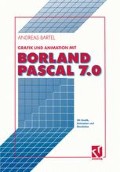Zusammenfassung
Vor einigen Jahren sorgte eine „sensationelle“ Entwicklung für Furore. Das zweidimensionale Medium Fernsehen sollte dreidimensional werden. Jedoch schlugen die Versuchssendungen nicht gerade auf Begeisterung bei den Zuschauern. Der Grund: Um den Tiefeneffekt quasi im Fernsehsessel vermittelt zu bekommen, muße man bei völliger Dunkelheit (außer natürlich dem eingeschalteten Fernseher) eine Filterbrille aufsetzen. Was es damit auf sich hat, wird in den nachfolgenden Kapiteln beleuchtet.
Access this chapter
Tax calculation will be finalised at checkout
Purchases are for personal use only
Preview
Unable to display preview. Download preview PDF.
Rights and permissions
Copyright information
© 1993 Springer Fachmedien Wiesbaden
About this chapter
Cite this chapter
Bartel, A. (1993). 3D-Perfekt? — Die „Fernseh“-Brillen. In: Grafik und Animation mit Borland Pascal 7.0. Vieweg+Teubner Verlag, Wiesbaden. https://doi.org/10.1007/978-3-663-06849-5_11
Download citation
DOI: https://doi.org/10.1007/978-3-663-06849-5_11
Publisher Name: Vieweg+Teubner Verlag, Wiesbaden
Print ISBN: 978-3-528-05333-8
Online ISBN: 978-3-663-06849-5
eBook Packages: Springer Book Archive

